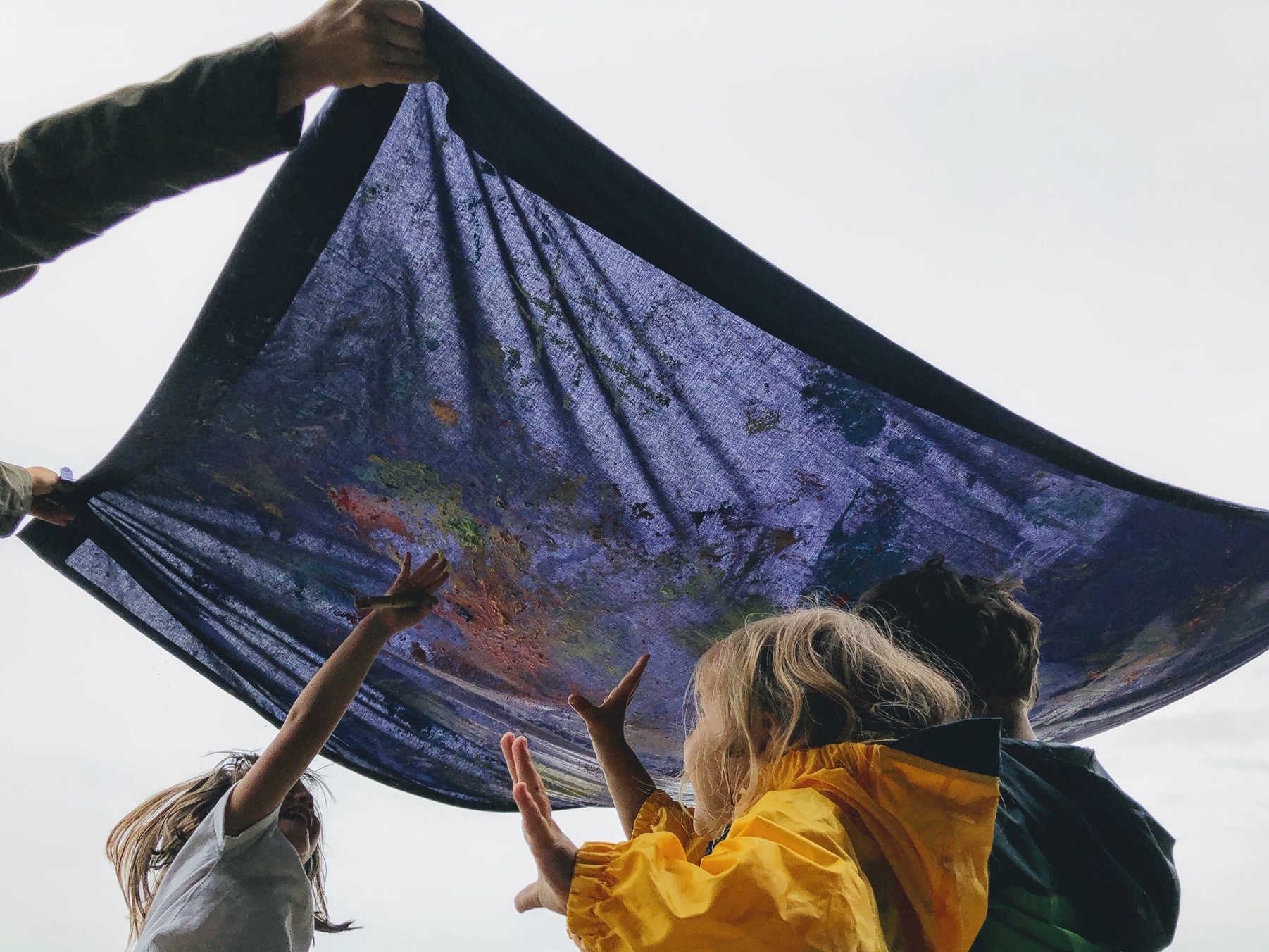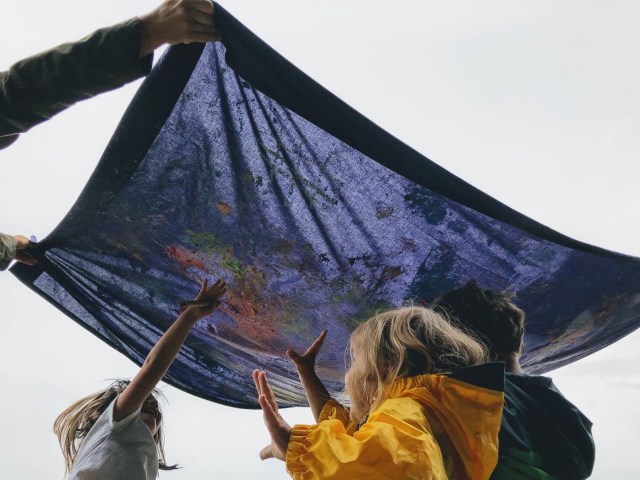
Play is important for all kids, especially when it’s child-led, meaning, the actions, discoveries and inventions feel like a child’s own.
There’s even a whole range of types of play, including free, independent play where kids make up the rules and play guided by adults.
The good news? We don’t have to entertain our children all the time. The quality of the time we spend as play partners matters far more than the quantity.
Often, getting kids to play independently is easier said than done. Enter: Play projects.
A play project revolves around a real-world theme: During the summer 2021 at Tinkergarten, for example, we transformed our homes and outdoor classrooms into “campsites” as part of our camping play project. Leaders helped families work together to add objects, adapt the setting and invent new ways to play in response to our “camping” theme.
This concept of project play is not new. “The Project Approach” is an established way of teaching in which teachers guide students through in-depth studies of real-world topics. Children’s museums also offer immersive experiences that invite pretend play around themes like the supermarket or the hospital.
It is easy to set up play projects in your own space. To get started, think of play projects in two phases: Setting up the environment and negotiating the play.
Phase 1: Setting Up the Project
The play environment is both the physical setting along with the objects, materials, themes and ideas. You don’t need to create a museum-level experience. In fact, kids learn much more when you start simple and co-create the experience bit by bit, over time.
During a previous summer’s Tinkergarten theme, kids immersed themselves in all things outer space for our Space Camp week. Outer space is captivating for kids and adults alike, making it a perfect play project to stoke the imagination and get kids hooked on science.
Here’s how to kick off an outer space play project at home:
- Gather up a few household objects
- Head outdoors
- Look up at the sky and wonder aloud, “What do you think it would be like to go to outer space? Do you think we could use these materials to pretend that we are going on a trip to the moon/another planet? Wonder together how you would get there. What would you see and do when you arrived?”
- If kids hear this invitation and run with it, let the play roll and join in alongside, following their lead. If kids lull or shift interest, all is not lost—if the project is “sticky” they’ll come back to it.
Phase 2: Negotiating the Play
Once a project takes hold, collaborate with kids to play and develop the environment over time.
Educators in the Project Approach think of this as “negotiating the curriculum.” It’s like a game of catch. We toss out a new material, idea or question. Then, we let kids decide how they want to respond. As we play, we can volley back and forth, always following their lead. This give-and-take approach gives us a supportive way to enrich play but also keeps kids in charge and helps us and our kids develop responsive relationships.
What does negotiating the play look like?
Here’s how the back-and-forth could work for outer space project play:
- Wonder & Make: Talk to kids about what else you could make for your trip to outer space. Then, work together to use open-ended objects (nature objects, recyclables, cloth, etc.) to create new props. Cardboard boxes can become rocketships. Nature objects and small objects can become buttons and dials on their space vehicle. Rocks and mud can be arranged to create a landing spot on the moon.
- Read and learn about space: Visit the library and wonder if there are books about outer space to read. One of our favorites is My Rainy Day Rocketship by Markette Sheppard. The Mars Perseverance Rover Interactive site has photos and video taken on Mars and from the 2020 mission.
- Discover the night sky: Take kids on a nighttime walk to behold the moon and stars. If a nighttime walk interferes with your child’s bedtime, look at constellations on apps like SkyView, Star Tracker & Star Walk.
- Plant open-ended material: Place a few simple objects, like a magnifying glass, paintbrush or bucket into the play area and see what kids do with it—maybe they become tools for excavating and collecting space rocks and other interesting specimens.
As the project persists, kids will iterate and invent with and without you. When young kids repeat play within the same theme, important neural connections are strengthened.
No matter how you begin, remember, it should start simple and grow naturally. The process of wondering, inventing, pretending drives the learning. Sharing in this process together connects us to our kids and helps kids learn how to create their own play projects, making their independent play forever more rich and engaging.
For Your First Project:
- Pick a Project: What do your kids find most exciting or interesting? Dinosaurs? Art? Cats? Superheroes? Or try out one of the themes below.
- Set it up: What environment would inspire play that revolves around that theme? Is there a home or other space in which this play could unfold? How could you mark off a corner of the yard, park or room that could be that space? What first few things do you need to get started?
- Add a few props: What ordinary objects could become props in the play? Sticks, dirt, etc.? Having objects ready can help you to wonder with kids about what you’d need to play.
- Wonder: Talk together about what you could wear, build or make.
- Play: Start to become the characters or people at the center of your project. So much pretending (and empathy) can come from this. Unicorns have horns, need to eat, have a safe place to sleep.
- Read and get more ideas: Read a book about unicorns, and you have gobs of material to bring into your project.
- Let it roll: Keep the project up and running, even if your child’s interest ebbs and flows. Then, when it’s clear they’ve moved on, try a new project.
Sample play project topics: Cooking, cats or dogs, bird’s nest, forest, Imaginary creatures, pirate ship, treasure hunt, restaurant, farming, construction and art studio.
RELATED STORIES:
The Simple Truth to Happy & Healthy Kids
Here’s How to Get Your Kids to Play on Their Own (for Long Stretches!)
How a Lobster Can Teach Your Kids Social Distancing











